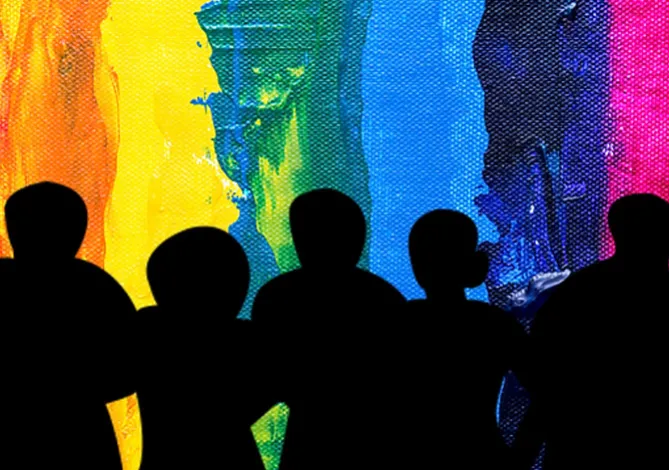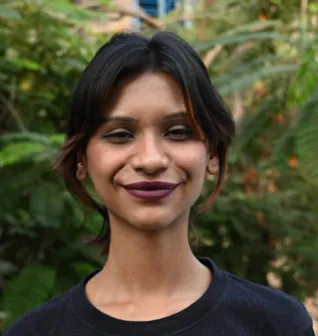
The 2030 Agenda for Sustainable Development provides a comprehensive framework for addressing global challenges and fostering a more equitable and sustainable future for all. Its 17 Sustainable Development Goals (SDGs) are not only a blueprint for achieving peace and prosperity for both the planet and its people but also a clarion call for global cooperation amongst United Nations (UN) member states. These goals seek to achieve socio-economic development, with the underlying theme of “Leaving no one behind” (LNOB). This theme goes beyond helping the most impoverished—it involves fighting discrimination and reducing inequalities globally, based on the UN human rights framework.
Transgender is an umbrella term that can be used to encompass people whose gender identity is different from the gender ascribed at birth.
This essay seeks to explore the status of the transgender community in India’s sustainable development journey. By analysing transgender rights in India, this brief envisions how the SDGs can help foster an environment that guarantees inclusion, equality, and social justice for this community.
Transgender is an umbrella term that can be used to encompass people whose gender identity is different from the gender ascribed at birth. India, within the South Asian socio-cultural context, carries one of the richest histories of the ‘Hijras’—who represent only one segment of the transgender community among other gender non-conforming identities. Evidence of this community is referenced in various temple carvings and religious scriptures. Even during the Mughal era, hijras held prestigious positions in the royal court. However, this community did not find a place within Western perceptions of gender and was classified as “criminals” under the Criminal Tribes Act of 1871 by the British colonisers. This marked the institutionalisation of the transgender community's marginalization—a situation that persists to this day.
The nature of this marginalisation is evident, with the transgender community consistently facing significant barriers in accessing healthcare, education, housing, and employment. Their daily lives are marred by the pervasive influence of stigma, discrimination, and violence, all of which are perpetuated by deeply ingrained societal biases and institutional inadequacies left unaddressed, effectively relegating them to the peripheries of society.
The 2011 census for the first time, introduced the 'other' category alongside male and female for gender identification. However, it's important to highlight that the census did not collect specific data on 'transgender' individuals. This 'other' category accounted for 4, 87,803 individuals, and various welfare measures are based on this number, for the transgender community. Thus, this is not an accurate number, creating a flawed space for gender identification.
A groundbreaking milestone was arrived at with the Indian Supreme Court’s historic NALSA judgment, affirming the right to self-identification of gender for transgender persons—which, however, carries its own set of challenges.
Over the past decade, India has made substantial progress in advancing the rights and socio-economic inclusion of transgender individuals. In 2014, a groundbreaking milestone was arrived at with the Indian Supreme Court’s historic NALSA judgment, affirming the right to self-identification of gender for transgender persons—which, however, carries its own set of challenges. Additionally, in 2018 Section 377 was decriminalised, legalising consensual same-sex adult relationships. These legal strides were complemented by the enactment of the Transgender Persons (Protection of Rights) Act in 2019, which, along with subsequent rules in 2020, articulated and safeguarded the rights of transgender individuals across various sectors, including education, healthcare, and the workplace, with a focus on improving their overall welfare. These have culminated in the launch of the National Portal for Transgender Persons and with it a slew of welfare measures. The Act in itself is heavily contested; further bureaucratic processes coupled with a stigmatised approach have made it difficult for these to reach actualisation
By aligning with the SDGs, India can tap into a wealth of international commitments and best practices related to gender equality, inclusivity, and human rights. The Universal Declaration of Human Rights which underscores the equality and dignity of every person globally has resolutions, outlined in the Yogyakarta Principles. These frameworks collectively underscore the imperative of ensuring the rights and well-being of transgender persons on a global scale. Therefore, we can consider that the foundation for the inclusion of trans rights within the SDGs is rooted in the goals themselves and international treaties.
SDG 1 is dedicated to eradicating multidimensional poverty, and transgender individuals are at greater risk due to systemic exclusion from economic, housing, and employment structures. This exclusion is further heightened by their disconnection from family and/or social support networks.
The Universal Declaration of Human Rights which underscores the equality and dignity of every person globally has resolutions, outlined in the Yogyakarta Principles.
Turning to SDG 4, this focuses on education, bringing to light a crucial factor that hinders their economic opportunities. In India, the National Human Rights Commission Survey in 2018, finds that a staggering 96 percent of transgender individuals face employment discrimination; they are often relegated to low-paying or exploitative occupations, such as sex work and panhandling, where 92 percent are denied employment opportunities. This is owed to the non-inclusive nature of schools, towards gender-deviant children. The “other” category exhibits high dropout rates, and low pass percentages, indicating a significant educational disparity, with a literacy rate of 56.1 percent, notably lower than the national average of 74.04 percent.
It is intriguing yet noteworthy that SDG 5, focusing on gender equality, does not explicitly encompass gender non-conforming identities in its targets. However, SDG 8 seeks to promote inclusive economic growth, quality employment opportunities, and secure employment, which is crucial for marginalised groups like the transgender community.
SDG 10, focused on reducing inequalities, emphasises inclusive social, economic, and political inclusion without discrimination. Therefore, this SDG could be broadly understood to encompass gender non-conforming individuals, like the transgender community.
Several Indian states are at the forefront of championing transgender rights. Notably, Odisha has pioneered a dedicated transgender policy to boost the social and economic well-being of the community. In 2021, Karnataka made history by amending recruitment rules to introduce a 1 percent reservation for transgender individuals. The state has also implemented welfare measures, addressing issues like the 58 percent dropout rate and providing scholarships. Additionally, Tamil Nadu has taken a significant step by incorporating transgender individuals into the Most Backward Classes (MBC) category, aligning with OBC, a move that recognises and tackles their social and economic needs.
Karnataka made history by amending recruitment rules to introduce a 1 percent reservation for transgender individuals.
Despite laws in India addressing transgender issues, challenges persist due to the deep-seated societal stigma rooted in British colonial practices that crept its way into our Constitution. Therefore, implementing inclusive policies aligned with SDGs is crucial to counteract ongoing discrimination institutionalised during the colonial era.
The SDGs, serving as a global guide for sustainable development, take the lead in shaping inclusive policies. Although SDG 5, focusing on gender equality, does not explicitly mention the transgender community, overlooking these identities contradicts the fundamental principle of “Leaving no one behind”. We must explore the implementation of SDGs within an inclusive environment and consider how these goals can be incorporated into India's development agenda for the transgender community.
Sharon Sarah Thawaney is the Executive Assistant to the Director (Kolkata) at the Observer Research Foundation
The views expressed above belong to the author(s). ORF research and analyses now available on Telegram! Click here to access our curated content — blogs, longforms and interviews.




 PREV
PREV


